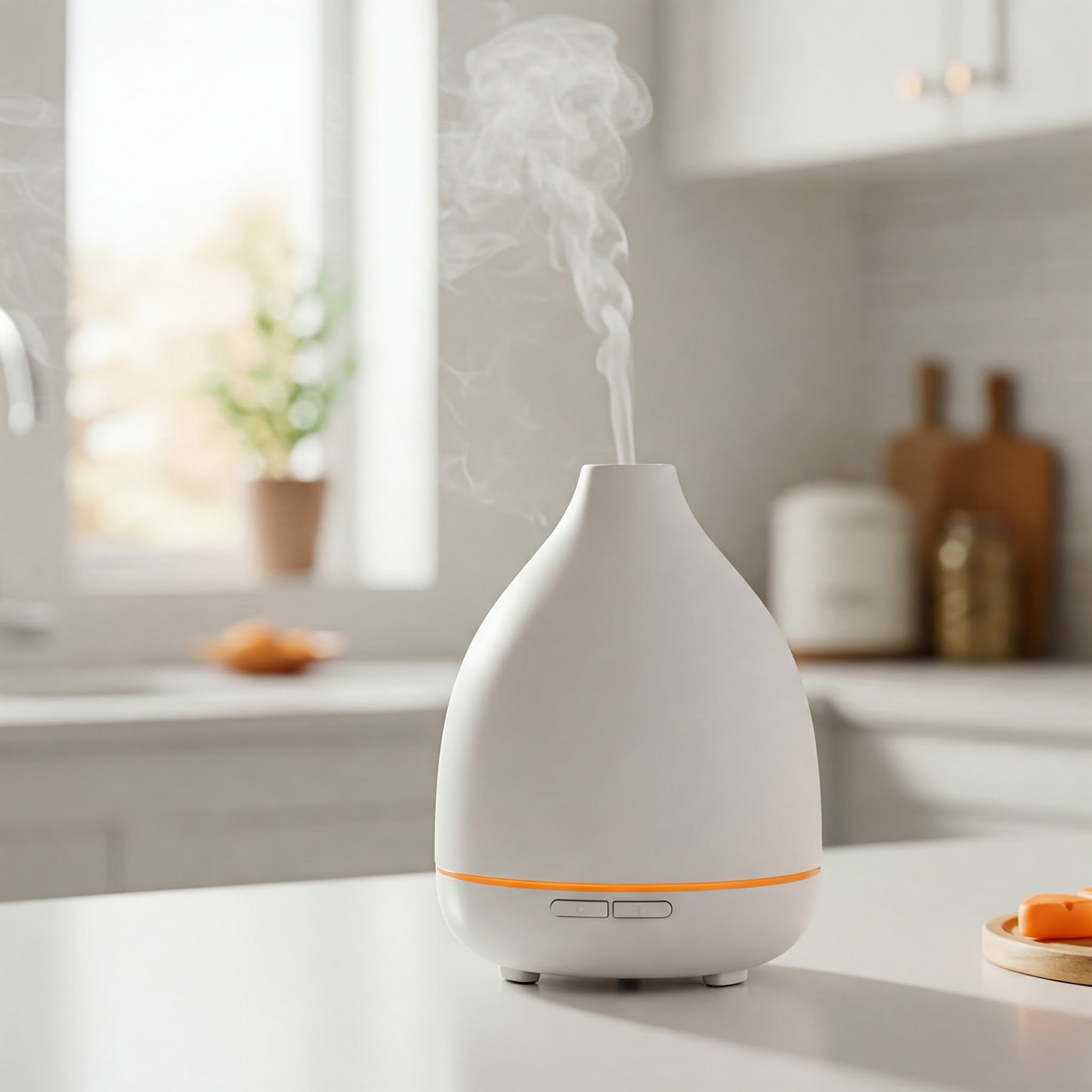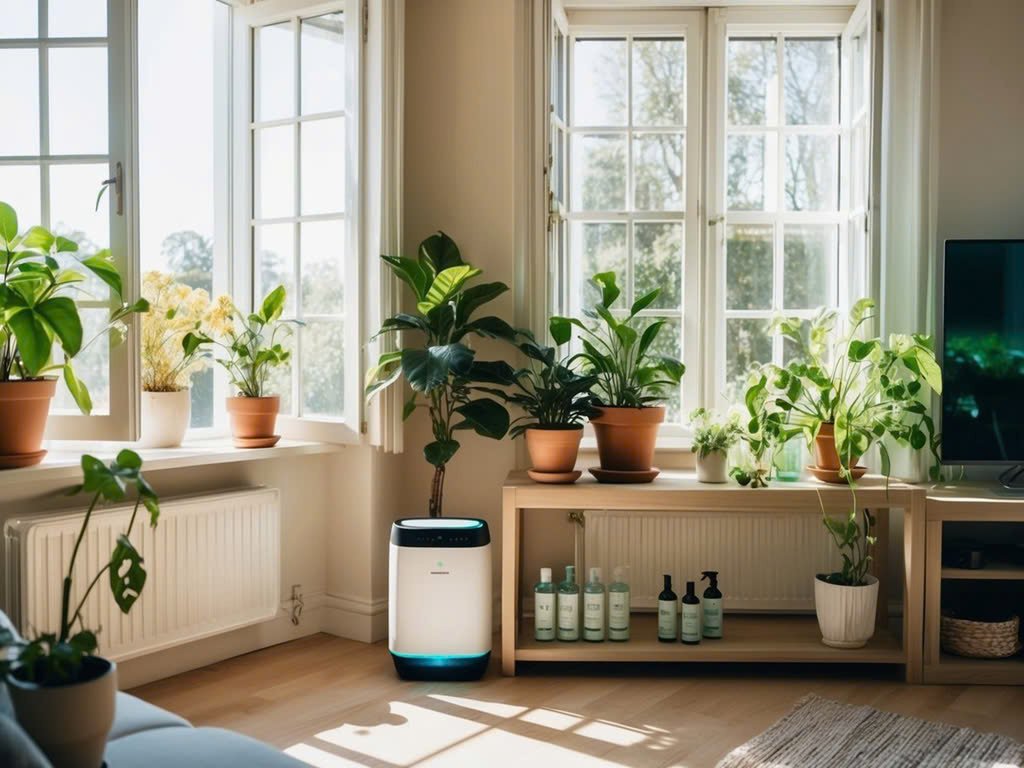Breathe Easy: A Beginner’s Guide to Home Diffusers
Learn how to choose and use home diffusers to create a soothing, fragrant atmosphere with this beginner’s guide!
A well-chosen fragrance can completely transform your living space, turning it into a welcoming oasis at the end of a busy day. By gently dispersing aromatic oils, a home diffuser not only elevates your surroundings but also helps create a calming environment for relaxation. This guide will walk you through everything you need to know before setting up a diffuser in your home.
If you are ready to refresh your interior aroma right away, you can order diffusers online and begin enjoying the benefits of an inviting scent in no time.
Understanding Home Diffusers
Home diffusers are devices designed to disperse essential oils or other fragrant substances into the air. Their primary purpose is to maintain a pleasant scent in living areas while providing a sense of tranquility. These devices come in various styles and types, allowing you to find the right option that aligns with your personal preferences and home décor.
Main Components of a Home Diffuser
Base or Water Reservoir: This holds the water to be mixed with the oil (for water-based diffusers) or a reed solution (for reed diffusers).
Power Source or Reed Sticks: Electric diffusers plug into a power source, while reed diffusers rely on natural wicking through porous reeds.
Fragrance or Essential Oil: This is the scent that the diffuser distributes throughout the room.
Diffusion Mechanism: Depending on the diffuser type, this could be ultrasonic vibrations, heat, or absorption (in the case of reed diffusers).
Types of Home Diffusers
Many diffusers work on the same principle of turning liquid fragrance into a fine mist. However, each type has its unique advantages and considerations. Below is a brief overview of the most popular types:
Ultrasonic Diffusers
Overview: Use vibrations to break down water and essential oils into a cool mist.
Benefits: Often double as humidifiers, adding moisture to the air. They also run quietly, making them suitable for bedrooms and offices.
Consideration: Require regular cleaning to prevent oil buildup or mold in the water reservoir.
Nebulizing Diffusers
Overview: Rely on pressurized air to atomize pure essential oils, producing a potent aroma.
Benefits: Since no water is used, the fragrance is often richer and more intense.
Consideration: Tend to be more expensive and can emit a louder noise compared to ultrasonic models.
Reed Diffusers
Overview: Employ wooden sticks (reeds) that soak up oil from a vessel and disperse scent without heat or electricity.
Benefits: No need for electricity or batteries, and many designs are decorative. They release fragrance consistently over several weeks.
Consideration: Diffusion rate can be slower, and you might need to flip the reeds occasionally to maintain strength. The luxury reed diffuser is a stylish option for upscale interiors.
Heat Diffusers
Overview: Warm the oil to evaporate it into the air. Common examples include candle-based devices or electric plates.
Benefits: Tend to be affordable and easy to find.
Consideration: Heat can alter the chemical composition of essential oils, potentially diminishing their therapeutic benefits.
Selecting the Right Diffuser for Your Space
Identifying the perfect diffuser for your needs involves thinking about factors like room size, intended purpose, and maintenance preferences. Here are key considerations to keep in mind:
Room Size: A large living room might need an ultrasonic or nebulizing diffuser with a higher output, while a small office could be sufficiently scented by a compact device.
Operating Time: Some diffusers offer automatic shutoff features or intermittent diffusion modes, which can be useful if you plan to run them throughout the night or during the workday.
Aesthetic Appeal: If you’re placing a diffuser in a highly visible area, consider a sleek, decorative design or a reed diffuser that doubles as a stylish centerpiece.
Budget: The cost can vary widely, so decide how much you want to invest. Ultrasonic diffusers can be quite affordable, while nebulizing models are on the pricier side.
Maintenance Needs: Ultrasonic diffusers need regular cleaning to prevent buildup, whereas reed diffusers require minimal upkeep beyond flipping reeds and refreshing the oil.
Setting Up and Using Your Diffuser
Proper setup ensures that you receive the maximum benefit from your diffuser. Although specifics vary based on the model, there are general steps you can follow.
Step-by-Step Setup (Ultrasonic Diffuser Example)
Choose the Perfect Spot: Place the diffuser on a stable surface, ideally in an open area with good air circulation.
Fill the Water Reservoir: Pour water up to the recommended fill line. Avoid overfilling to prevent malfunction.
Add Essential Oils: Mix in a few drops of your preferred oil. Start with fewer drops and increase if needed.
Close and Power On: Secure the lid or cover, then turn on the device. Some models feature lighting and mist settings you can adjust.
Monitor Mist Output: If the fragrance is too strong, lower the mist intensity or reduce the number of oil drops next time.
Top Fragrance Families
When deciding on scents, remember that different aromas can create different moods. Your choice should align with how you want your space to feel—calm, energetic, or somewhere in between.
Floral: For a soothing atmosphere, opt for classic favorites like lavender, jasmine, or rose.
Citrus: Lemon, orange, and grapefruit oils can add an invigorating burst of freshness.
Woodsy: Scents like cedarwood and sandalwood often evoke a grounding, cozy environment.
Herbal: Mint, rosemary, and eucalyptus can be particularly refreshing and revitalizing.
Spicy: Notes of cinnamon, cloves, or ginger can lend warmth and comfort during cooler months.
Maintenance for Long-Lasting Performance
Proper upkeep is essential for any diffuser, whether it’s ultrasonic, nebulizing, or reed-based. Without routine maintenance, diffusers can become clogged, lose their fragrance quality, or even grow mold.
Ultrasonic and Nebulizing Diffusers
Regular Cleaning: After each use, rinse the reservoir and gently wipe down the surfaces to remove residual oils.
Deep Clean Cycle: Every couple of weeks, use a mixture of water and white vinegar to thoroughly cleanse the reservoir and internal components. Run the diffuser for a few minutes, then empty and rinse.
Prevent Mineral Deposits: If you have hard water, consider using distilled or filtered water to reduce limescale buildup.
Reed Diffusers
Oil Refills: When the fragrance becomes faint, it may be time to top up or replace the oil solution.
Flip the Reeds: Once a week (or as needed), flip the reeds to refresh the aroma.
Replace Reeds Over Time: Reeds may become clogged with oils, so replace them every few months for optimal fragrance distribution.
Tips for Better Results
Ensuring a satisfying fragrance experience often comes down to small details. These tips can help you get the most out of whichever diffuser type you choose:
Ventilation: While an enclosed space helps contain the aroma, some airflow is beneficial to circulate the scent more evenly.
Quality Oils: Cheap or synthetic oils may produce a weaker scent and could contain unwanted chemicals. High-quality oils typically yield a purer, more pleasurable aroma.
Experimentation: Don’t hesitate to mix oils to craft your signature blend. Just remember to adjust the ratios slowly to avoid overpowering the room.
Placement Matters: If the diffuser is too close to soft furnishings or curtains, it might cause slight dampness or staining over time. Keep an eye on surrounding objects.
Creating an Inviting Atmosphere
Home diffusers are more than just devices for dispersing scent. They play a role in your daily routine, contributing to physical comfort and emotional well-being. By introducing a soothing fragrance in high-traffic areas like living rooms, bedrooms, or workspaces, you can establish a calm, welcoming vibe for family members and guests alike.
Consider pairing a diffuser with other cozy elements, such as soft lighting or plush throws. Strategic additions like calming background music or a tidy, organized space can also enhance the ambience. The overall goal is to create a balanced environment where fragrance complements the décor and functionality of each room.
Final Thoughts
A home diffuser is a simple yet effective way to elevate your indoor environment. Whether you opt for an ultrasonic model that adds moisture to the air or a stunning reed diffuser that doubles as décor, your choice will influence both the scent profile and look of your home. By exploring different types of diffusers, experimenting with various fragrance families, and performing regular maintenance, you’ll have no trouble keeping your home feeling fresh and inviting.
A well-maintained diffuser can help manage stress, improve mood, and promote better rest. When you invest in a quality diffuser, you’re also investing in the serenity of your space. Remember to select high-grade oils, take proper care of your device, and find a scent that resonates with your personal style. Once everything is in place, you’ll discover how easy it is to breathe easy and enjoy the unique comforts of a beautifully scented home.











